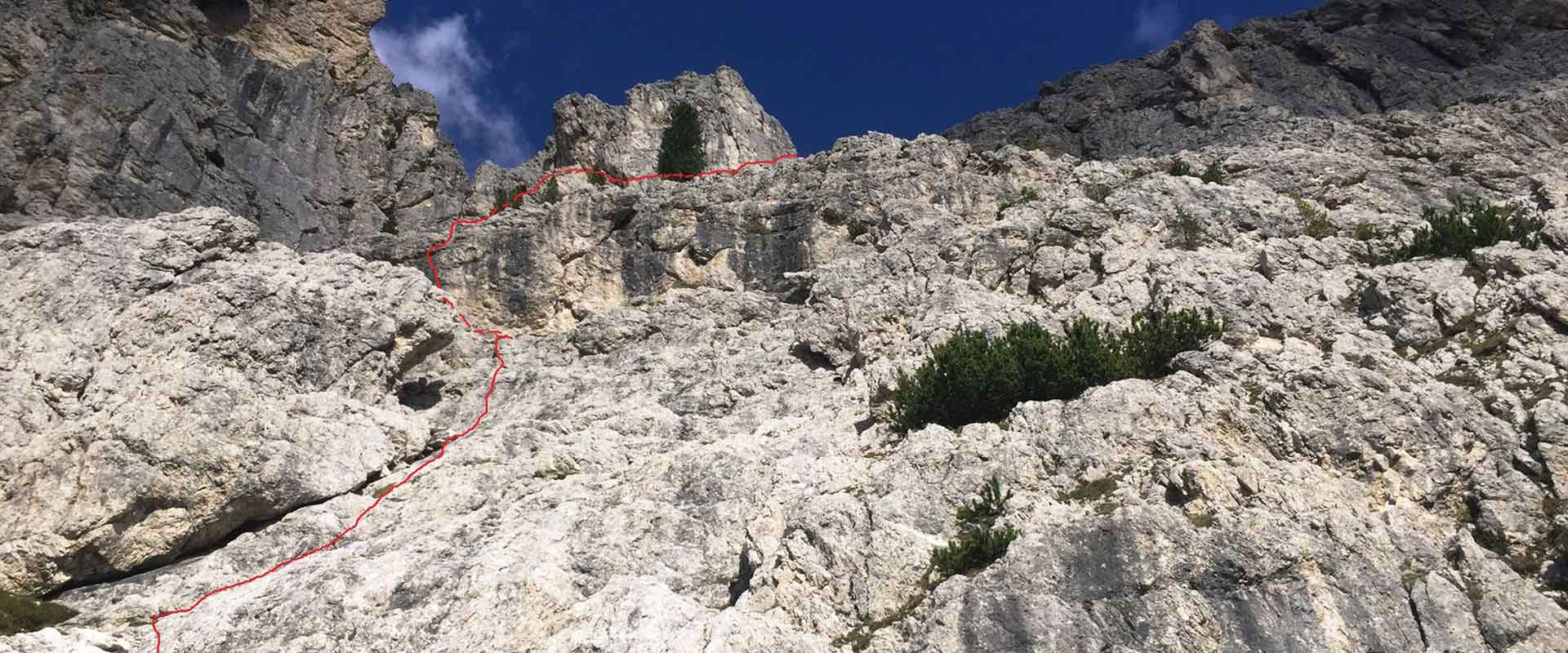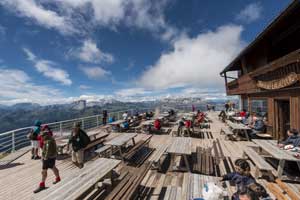TECHNICAL DETAILS
Difficulty
B (K2) - moderately difficult
Departure point
Tre Sassi fort, altitude 2168 m
Arrival point
Tre Sassi fort, altitude 2168 m
Total duration
1 h 50 m
Total difference in altitude
204 m
Minimum altitude
2168 m
Maximum altitude
2319 m
Access
Valparola pass
Approach
The access to the Via Ferrata alone is of great historical interest: to reach its access you first have to go through the Goiginger Tunnel with its artillery positions facing the Martini Ridge. Then you cross the Goiginger emplacement on the saddle, the military work of the First World War which made the Austrians on Mt. Sasso di Stria unassailable.
At the Tre Sassi fort, at an altitude of 2168 m, take the path towards Mt. Sasso di Stria. After 770 m you reach the Goiginger tunnel at 2255 m of altitude. The path is not difficult.
The entrance to the Goiginger tunnel is relatively narrow, but then you can walk through upright along its entire length of 350 metres. Only 140 meters from the exit of the Goiginger tunnel, at an altitude of 2287 m, you reach the Goiginger emplacement. The entrance to the Via Ferrata is located 810 m from the Goiginger emplacement.
The access time through the Goiginger tunnel is 1 hr.
Ascent
The ascent on this very well secured Via Ferrata is easy and takes about 45 minutes.
Return
Walking down along the trenches on the ridge of Mt. Sasso di Stria, you get back to the Tre Sassi fort.
Peak
Sasso di Stria, 2477 m
Orientation
southwest
Gear
a normal via ferrata kit and a torch or front lamp for getting through the tunnel



 Paolo Tassi
Paolo Tassi